- Call us: 01444 237070
- Contact Us
- Stores
- Sign In / Register
-
- Back
- Used Cameras
- Used Accessories
- Used Lenses
- Used Video
- Used Film Equipment
- Used Stock Alert
- Used Blank Test
- Sell or Part Exchange
- Used Clearance
- Recently Added Used Equipment
- Park Picks
- All Used Black Friday Deals
- Faulty
- Trade-In
- Blog
- New in
- Call us
- Contact us
- Stores
- Sign in
- Categories
- Tips & Inspiration
- Reviews
- News
- Events
- Features
- Buying Guides
- Competitions
Fujifilm X-H2 Hands-on Review for Photography
Since its release back in September 2022, the Fujifilm X-H2 has been the flagship high-resolution APS-C format Fujifilm X mount camera. Its arrival came as a bit of a surprise, following hot on the heels of the X-H2S, which launched just a couple of months earlier in the same year.
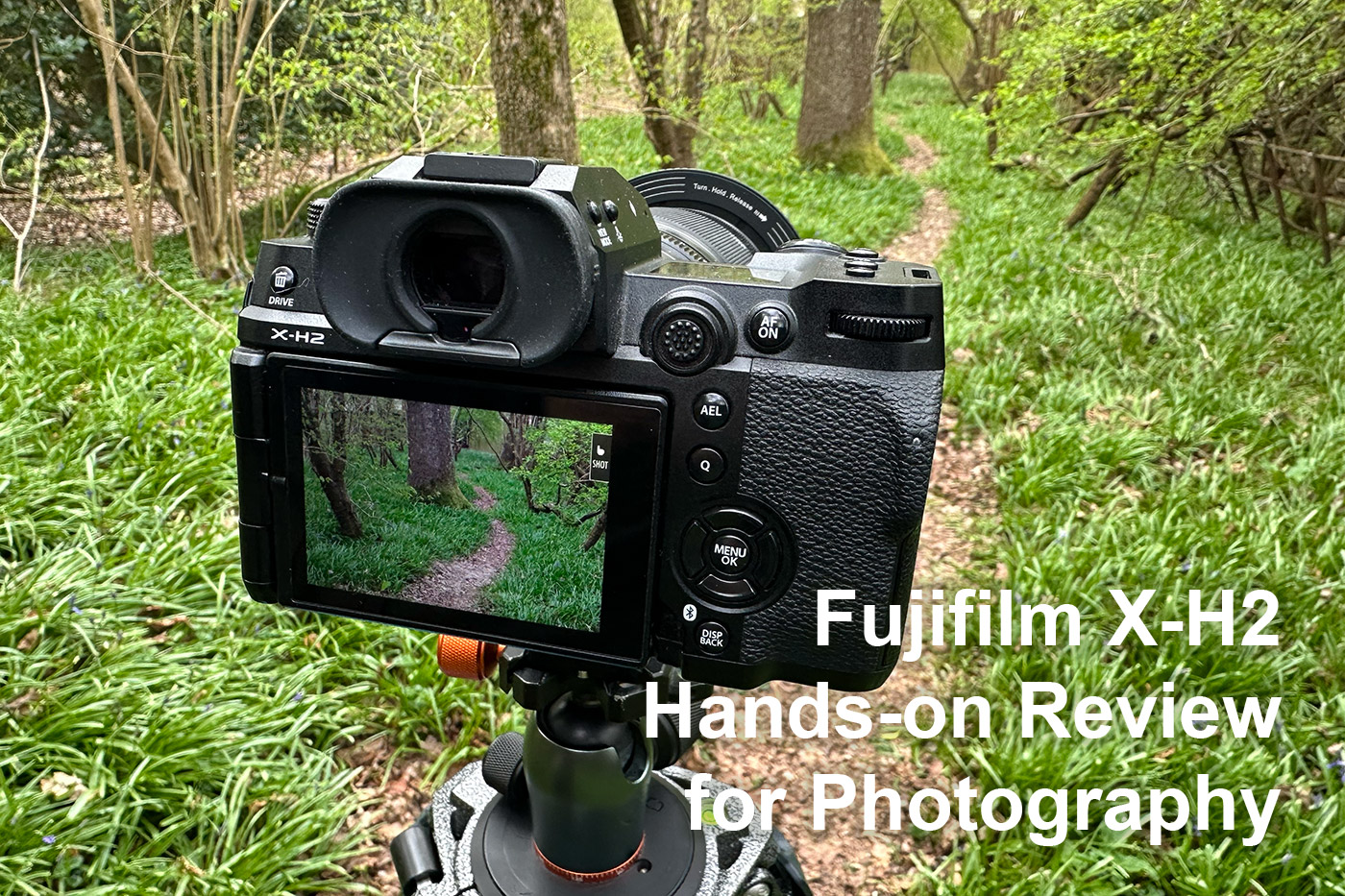
During a hands-on review of the medium format GFX 100 II, I had the opportunity to shoot with the X-H2 side-by-side, providing a comparison between Fujifilm’s two flagship interchangeable lens cameras, albeit from entirely different systems. Despite the sensor size difference, both offer powerful features for serious photographers, with surprisingly overlapping capabilities in terms of resolution, usability and photography tools.
In this Fujifilm X-H2 review, I’ll be concentrating on photography rather than its hybrid video credentials. The X-H2 introduced Fujifilm’s first 40.2MP APS-C sensor, which was an unexpected and quite significant leap from the previous gen. 26MP version. This also made it the highest-resolution camera in the X Series, and the highest-resolution APS-C model available outside of Fujifilm’s X-mount lineup to date.
For landscape, portrait and event photographers who benefit from more detail and a compact system, it’s a technical milestone that brought more than a few surprises during testing. So let’s get started.
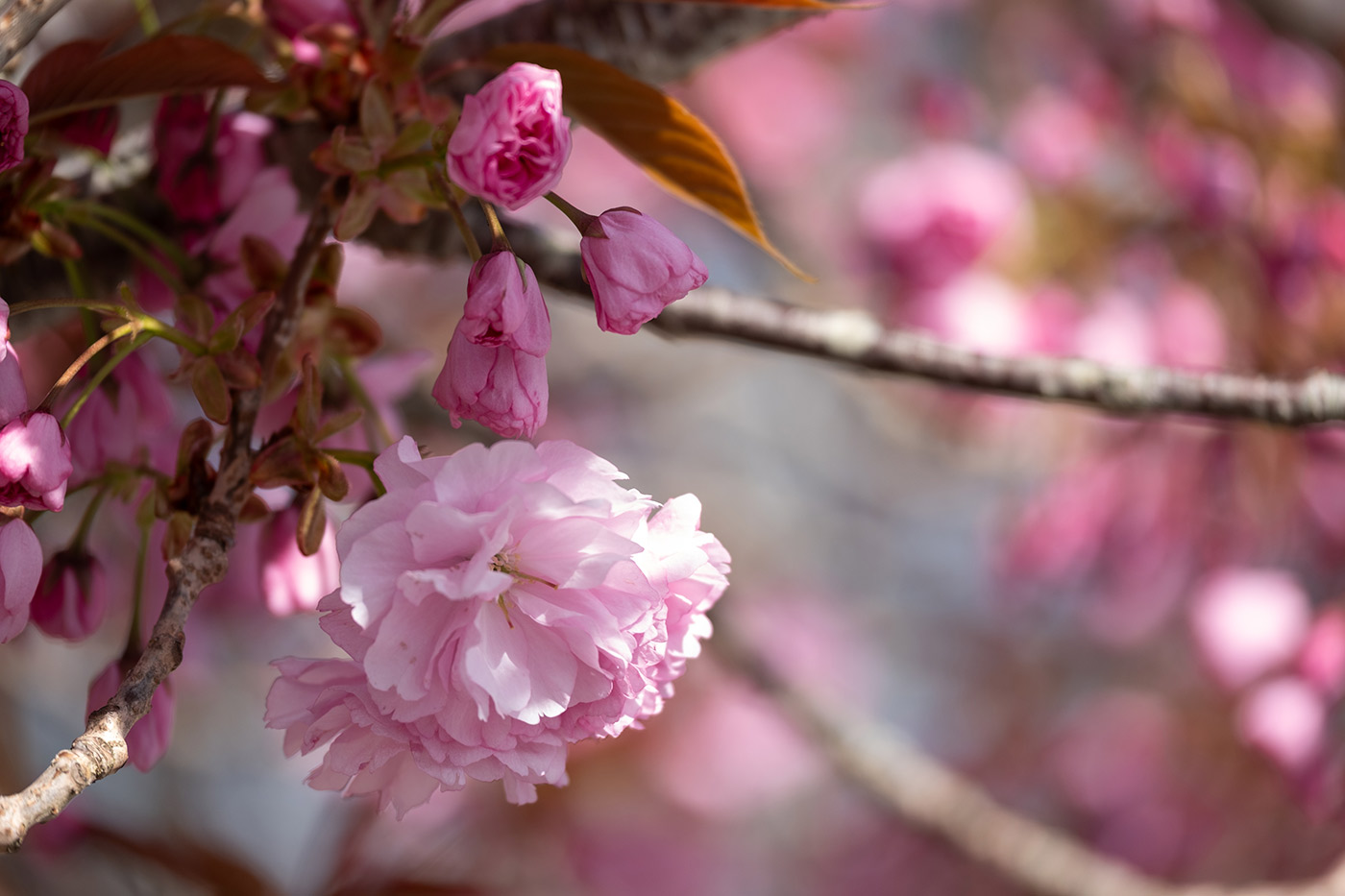
Sample 01 with XF 50-140mm f/2.8 R LM OIS WR at 140mm. Camera settings: f/2.8. 1/250 sec. ISO 64 (right click to enlarge)
Fujifilm X-H2 Sample Images
All of these Fujifilm X-H2 sample images were made with very little editing in order to highlight how the camera performs straight out of the box. I aimed to cover a variety of everyday subjects using a mixture of shutter speeds and ISO values to reflect real-world conditions, which included sunshine, mist and everything in between.
Examples cover landscapes, people, flowers and even a few animal shots, with each intended to show how the X-H2 and the two X lenses handle colour, sharpness, tone, depth of field and detail across different situations. Speaking of lenses…
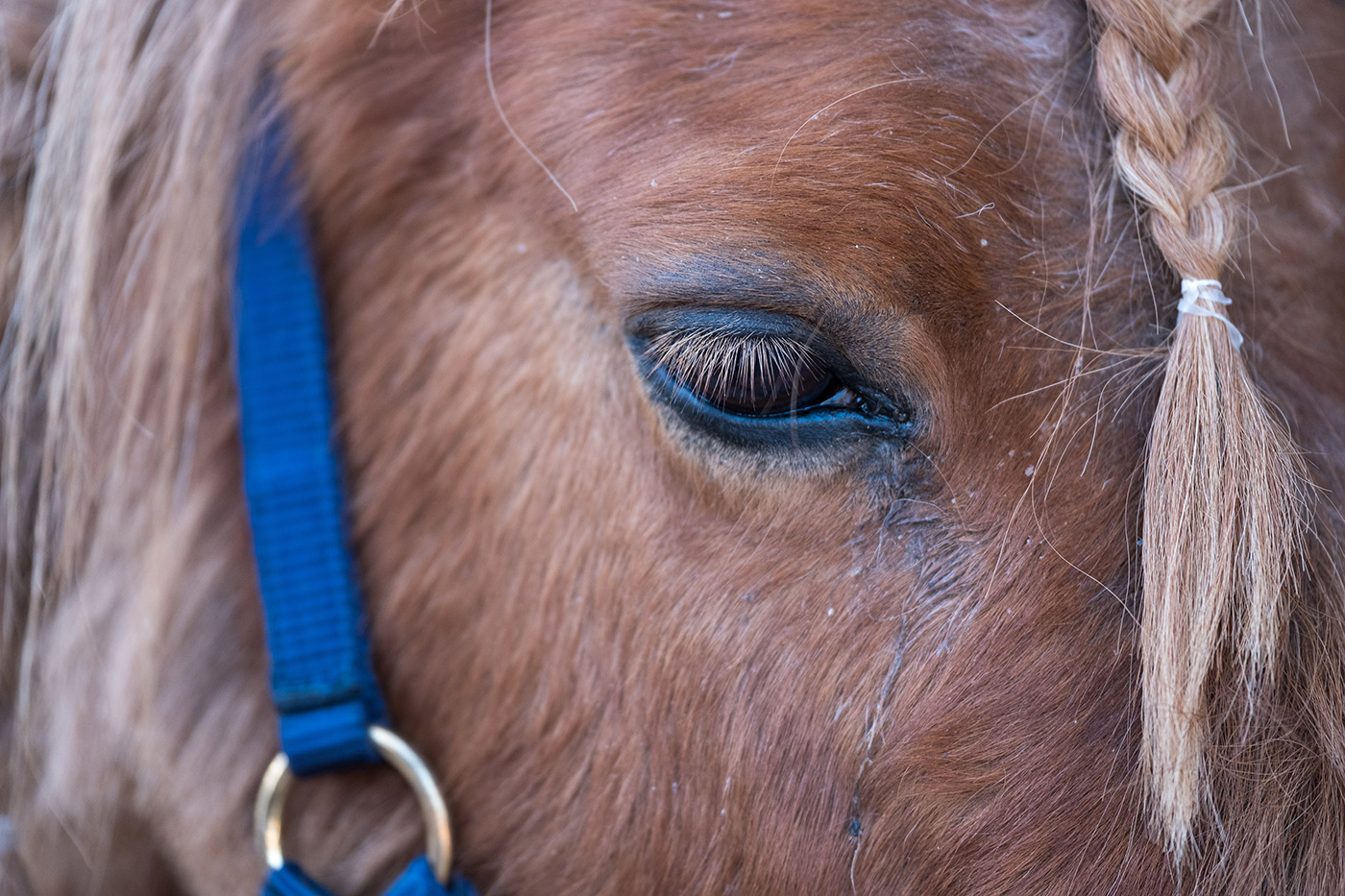
Sample 02 with XF 50-140mm f/2.8 R LM OIS WR at 140mm. Camera settings: f/2.8. 1/320 sec. ISO 500 (right click to enlarge)
Best Lenses for the Fujifilm X-H2
When testing the X-H2 I shot with two very different Fujifilm X mount lenses, which gave me a good sense of how flexible this system can be. The first was a pristine used Fujifilm XF 35mm f/2 R WR lens, which is a compact, weather-sealed standard prime lens that provides a full-frame equivalent of around 53mm.
The second was the Used Fujifilm 50-140mm F/2.8 R LM OIS WR Lens, which is a workhorse that delivers a 76-213mm equivalent range with a constant f/2.8 aperture. I love this type of focus range as it is so versatile for anything from portraits, weddings and events, to landscapes, wildlife and action, where medium telephoto reach is beneficial.
Together these lenses cover virtually any shooting scenario, with a lightweight prime for walk-around street photography and natural portraits, to subjects that benefit from telephoto compression and subject separation. The 50-140mm was on the camera most of the time due to its versatility, whereas the 35mm benefits from its extremely compact size, low weight and speed.
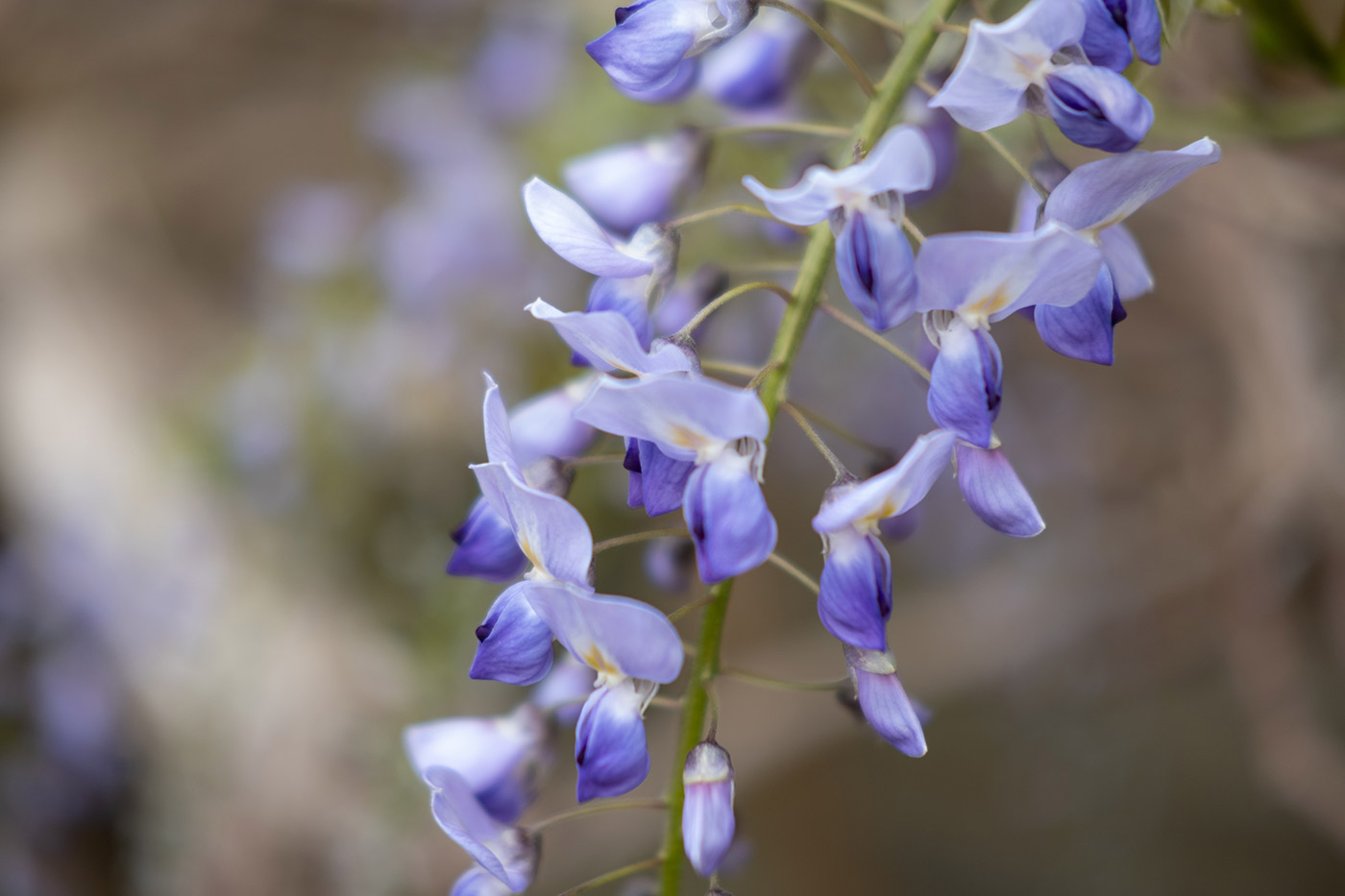
Sample 03 with XF 35mm f/2 R WR. Camera settings: f/2. 1/640 sec. ISO 125 (right click to enlarge)
If you’re wondering about the best lenses for the Fujifilm X-H2, these two demonstrate how older, proven XF optics still shine with the latest high-resolution sensor. Park Cameras stocks a great range of new and used Fujifilm lenses, however regardless of whether you shooting new or used glass, the sharpness, contrast and colour handling keeps up surprisingly well.
It is worth noting that Fujifilm has redeveloped some of their more popular and older lenses with second generation benefits to resolve this generation of high-resolution sensors and create lighter optics for today’s active creators. A great example is the XF 16-55mm F/2.8 R LM WR II Zoom Lens, which ticks all the boxes by being smaller, lighter and sharper than its predecessor. Let’s get back to the camera and look at how it handles next.
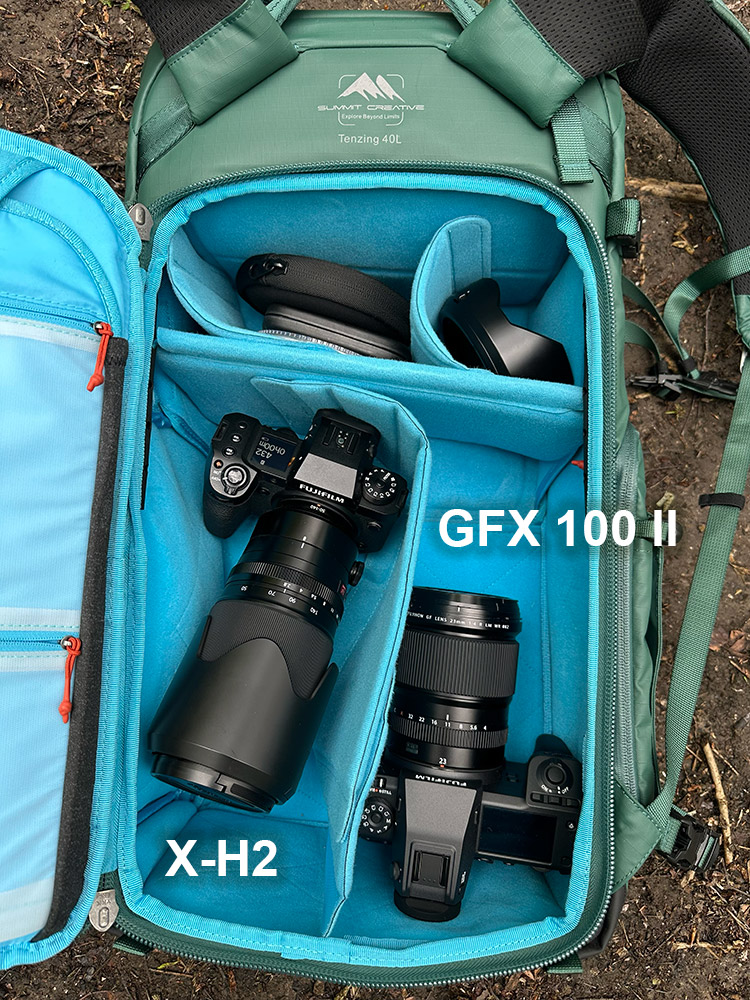
In the bag - check out our Summit Creative Camera Backpack Review
Build and Handling
The Fujifilm X-H2 feels noticeably larger than some of Fujifilm’s other X-series cameras, such as the X-T5, which weighs 557g vs 660g. It’s a workhorse for serious photography, which is reflected in robust build and a chunkier design.
When placed side-by-side in my bag next to the GFX 100 II, which is shown in the photo here, the size difference isn’t as apparent as you might expect. Although the GFX weighs a hefty 1030g compared to the X-H2’s 660g, both offer a reassuringly substantial grip.
Purchase on the X-H2 is excellent, with enough body-depth to suit larger hands, and the camera features a weather-sealed magnesium alloy shell for strength. I found the control layout quite well spaced out, so it was easy to adjust settings without accidentally pressing nearby buttons. Unlike the GFX 100 II, I didn’t trigger the very handy Q Menu by mistake as it’s in a more intuitive spot.
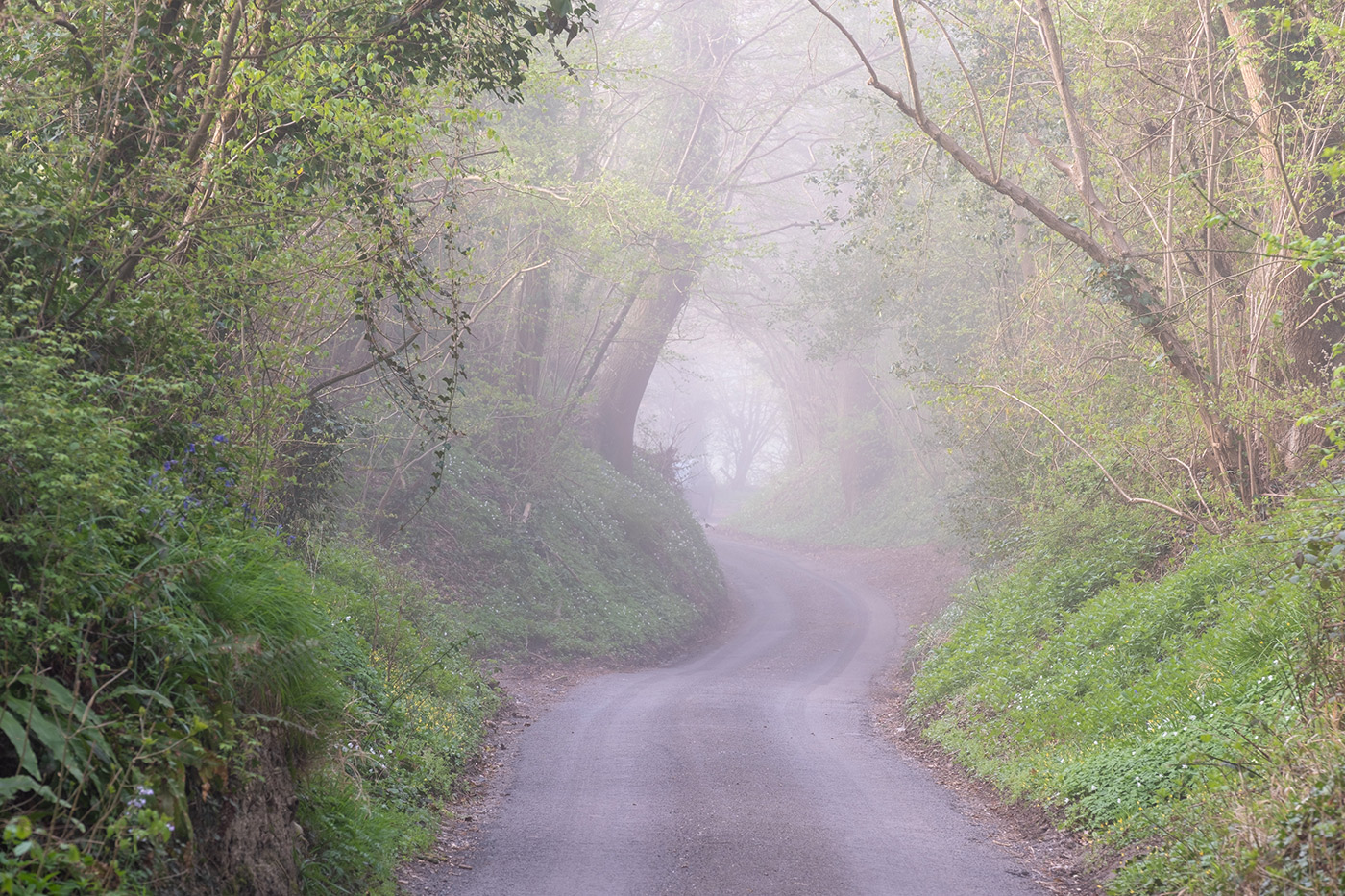
Sample 04 with XF 50-140mm f/2.8 R LM OIS WR at 102mm. Camera settings: f/2.8. 0.4 sec. ISO 125 (right click to enlarge)
The top LCD screen on the X-H2 is an always-on high-resolution display that’s genuinely useful, showing key settings at a glance. A fully articulating rear LCD makes framing easy, and you can fold it back to protect the screen, which is common, but a nice feature to have.
Both screens are bright and clear outdoor shooting, with the main LCD offering a 1.62 million-dot resolution, and the EVF providing a good 5.76 million-dot OLED resolution with 0.8x magnification.
If you’re comparing designs and wondering whether you should still buy the Fujifilm X-T3 Or X-T4, the body design of the X-H2 is less retro and more modern DSLR-like, which makes it feel well equipped for demanding shoots. If you’re out all day or need something with solid ergonomics, this may be a great fit, albeit without the classic look of some Fuji cameras. Next, let’s explore image quality from this high-res sensor.
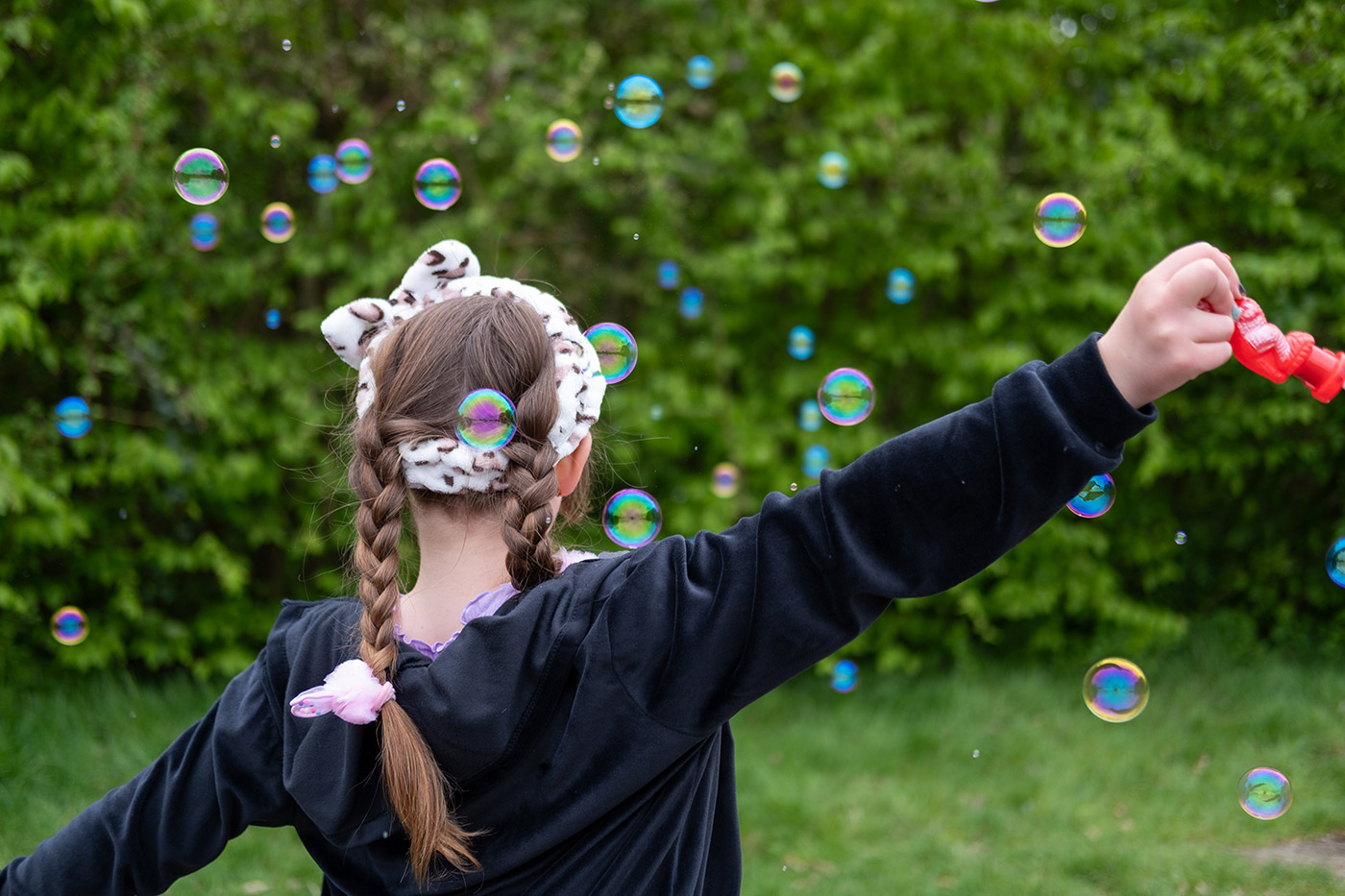
Sample 05 with XF 35mm f/2 R WR. Camera settings: f/2. 1/640 sec. ISO 125 (right click to enlarge)
Image Quality and Sensor Performance
The Fujifilm X-H2 image quality is where this camera is intended to set itself apart from other APS-C models. To this end its 40.2MP X-Trans CMOS 5 HR sensor delivers the highest resolution of any APS-C camera to date, producing detailed files that measure 6864 x 5152 pixels.
This allows you to crop in significantly while retaining plenty of image quality, which can be a big advantage for anything from wildlife and street, to general-purpose candid photography. Despite the high pixel count, noise control is well controlled, with no discernible difference when shooting at base ISO 125 compared to my Sony, which has a base ISO 100.
The X-H2 performed surprisingly well in low light, with good clean results at higher ISOs and a respectable autofocus sensitivity down to -5.0EV. Combined with its 7.0-stop in-body image stabilisation system, handheld shooting is very effective and I was consistently impressed with the sharpness I was able to achieve in natural light, even during late evening and at sunrise.
Shooting in 14-bit RAW gives you plenty of colour data for post-processing, and the files are malleable when trying to recover highlights and lift shadows. Dynamic range is good, rated at 12+ stops, although it does fall short of the GFX 100 II’s 14+ stops, but that camera costs a whopping £7000!
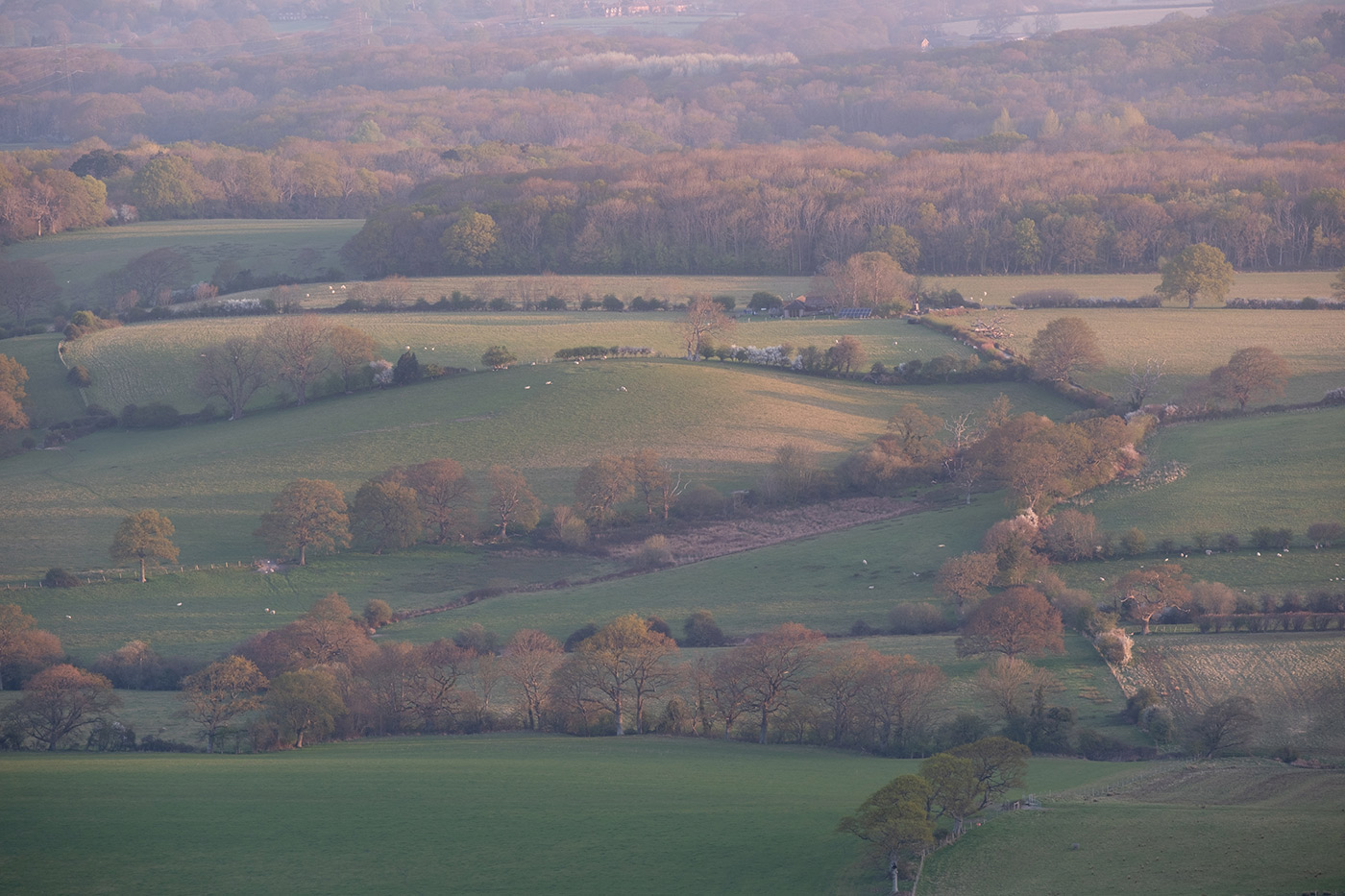
Sample 06 with XF 50-140mm f/2.8 R LM OIS WR at 140mm. Camera settings: f/5.6. 1/13 sec. ISO 125 (right click to enlarge)
Fujifilm’s colour science really shines, and I saw accurate white balance in skin tones, foliage, and skies, which all come through beautifully, with very little need for adjustment.
I experimented with several of Fujifilm’s 19 included film simulations (which is up to 20 on the latest bodies), and my favourites were still some of the classics, such as Provia for general shooting, Astia for people, and Classic Chrome for more contrasty scenes. For landscapes Velvia is nice and punchy, with saturated results, which are all recorded for you straight out of camera.
At launch the X-H2 was in a category of its own, at least where resolution is concerned, however we subsequently have the same sensor in the X-T5 and even the highly desirable compact Fujifilm X100VI.
The camera and sensor measure up well with sharpness and colour that competes against larger sensors. Unless you need more extreme low-light performance or a wider depth of field, there are few compromises being made here, especially as Fujifilm has released a number of second-generation lenses, which definitively resolve the higher resolution. So once you’ve decided on this model, the question is whether to buy it new or second-hand.
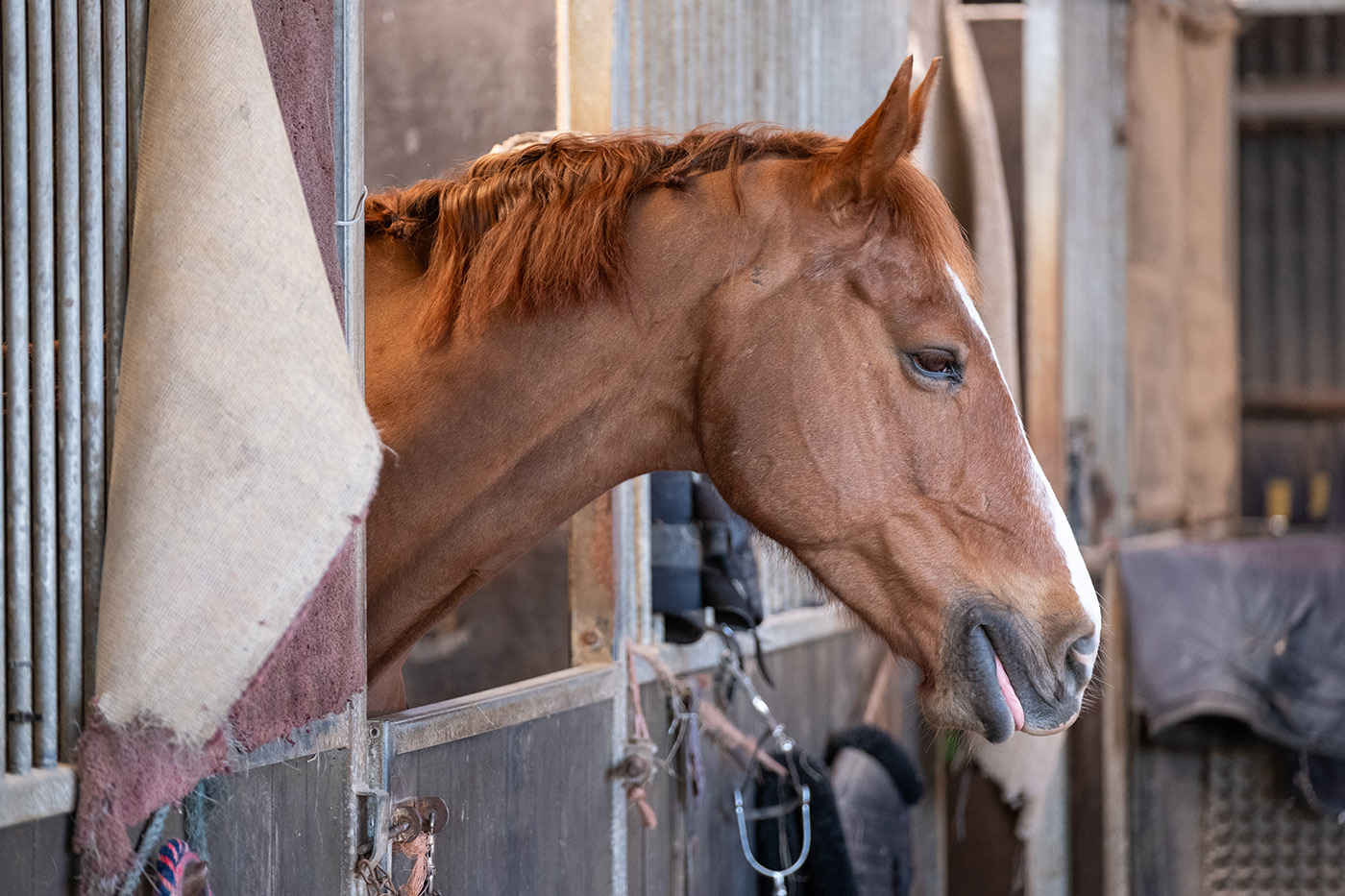
Sample 07 with XF 50-140mm f/2.8 R LM OIS WR at 130mm. Camera settings: f/2.8. 1/320 sec. ISO 1600 (right click to enlarge)
Autofocus Performance
Autofocus on the Fujifilm X-H2 is improved compared to the previous generation and on par with other cameras in the X Series, though not as proficient as the stacked-sensor X-H2S. It includes subject detection for humans (with face and eye AF), animals, birds and vehicles, which covers the needs of most photographers. One thing to note is that you’ll need to switch between recognition modes manually, as the camera uses separate algorithms for each subject type. It’s slightly less intuitive than some systems which auto-detect, but does provide considered focusing.
I was pleasantly surprised by how well the camera tracked subjects that are small in the frame from a distance. Capturing my kids running at range, the X-H2 successfully picked up and held focus more often than not, which is helped by the useful subject box that confirms acquisition. It’s not the stickiest tracking system I’ve ever used, and did occasionally miss fast or erratic movement, but overall results were excellent for everyday photography.
You can fine-tune AF behaviour to suit your shooting style, with options for single point, zone, wide/tracking and full sensor area, giving plenty of flexibility depending on the scene. Combined with the high-resolution sensor and IBIS, autofocus performance is reliable enough to deliver plenty of keepers during real world shooting.
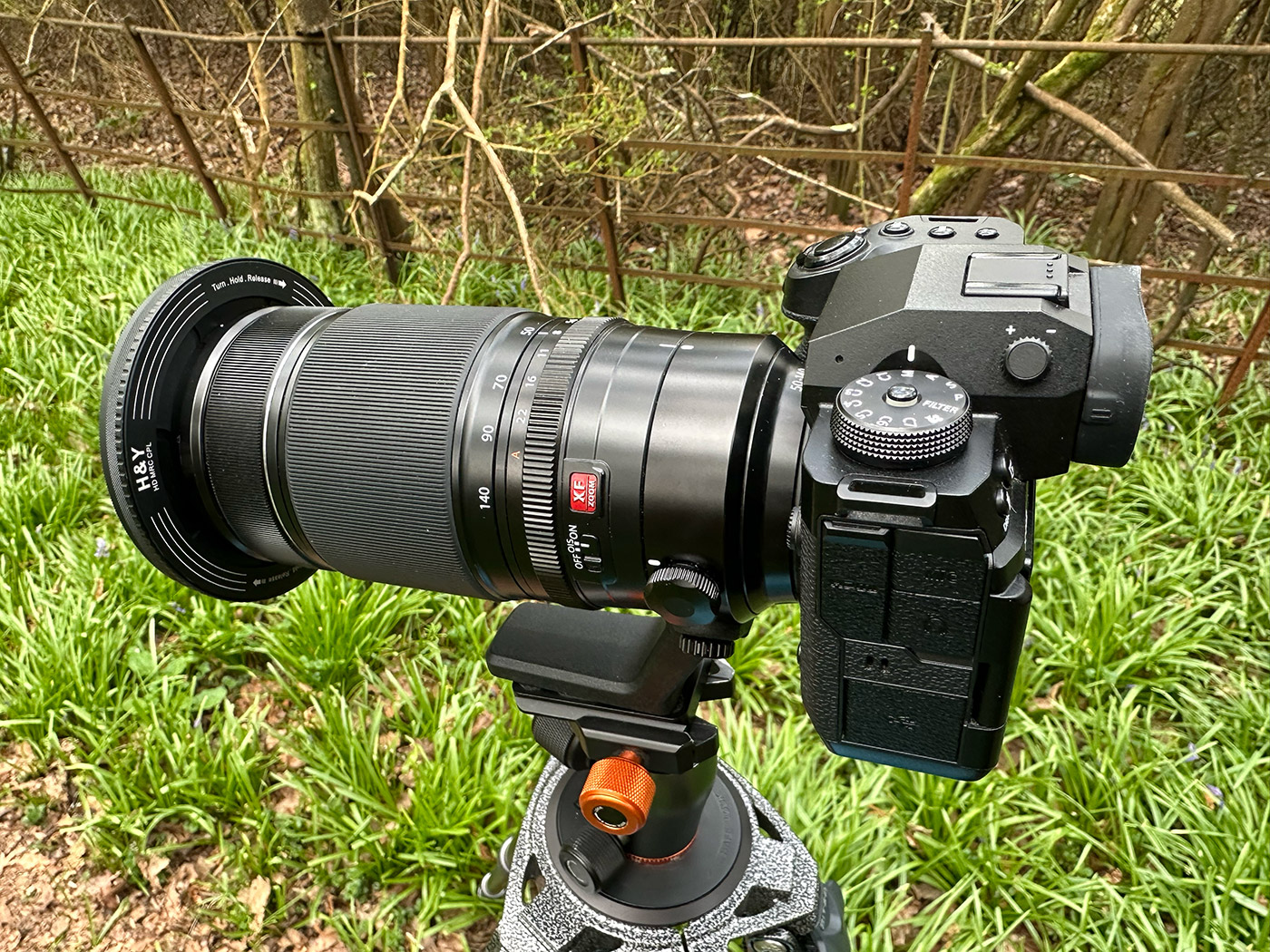
Best Accessories for the Fujifilm X-H2
A few well-chosen accessories can make a real difference to any shooting experience, which goes for these Fujifilm X-H2 accessories here.
First and foremost, it’s essential to pick up an extra NP-W235 battery or two. While battery life is good with a CIPA rating of around 540 frames, in the real world, when shooting for a whole day, or in the cold, you definitely don’t want to get stuck on empty without power.
A second or even third battery ensures you never miss a shot and they cost around £60 so there’s no excuse. Pair these with the Fujifilm BC-W235 Dual Battery Charger, and you can charge two batteries at once, speeding up turnaround between sessions.
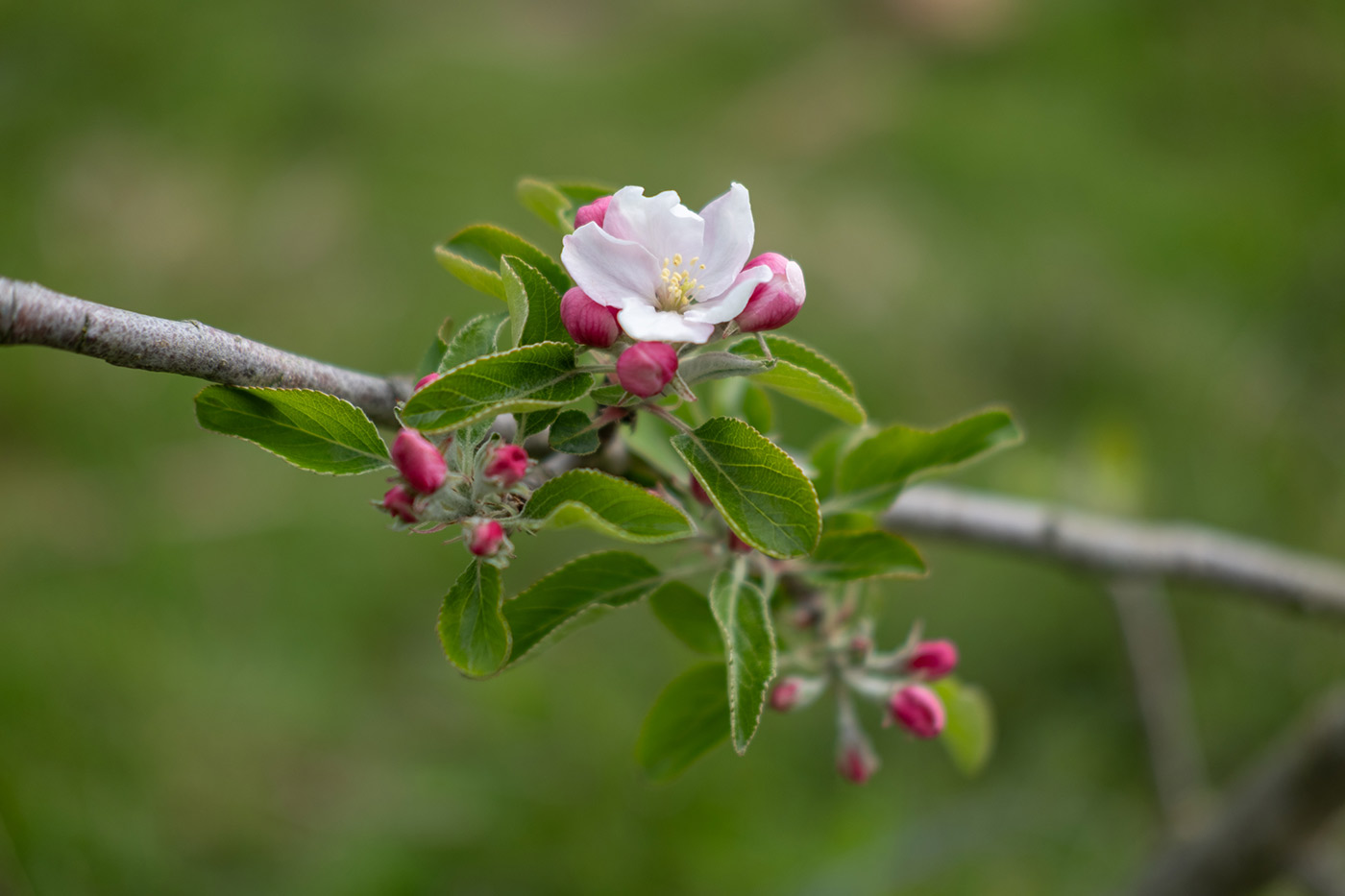
Sample 08 with XF 35mm f/2 R WR. Camera settings: f/2. 1/2500 sec. ISO 125 (right click to enlarge)
The X-H2’s high-resolution sensor benefits from using fast, reliable media. A fast CFexpress Card (Type B) like the Delkin Devices 325GB 1800MB/S Black or a Lexar Professional GOLD 512GB (among many others) is strongly recommended if you plan to shoot 8K video or high-speed bursts in RAW.
For everyday photography, a high-speed V90-rated SD card will also deliver excellent performance, especially when capturing 40MP stills in 14-bit RAW. Our memory cards explained guide has lots of useful information to demystify the best cards for various situations.
Other handy accessories include a camera grip or L-bracket to make portrait orientation shooting easier, and a lightweight and portable carbon fibre tripod to take advantage of the sensor’s resolution when capturing landscapes or architecture. Add some of these and you can get the very best performance and usability from one of Fujifilm’s most versatile X Series cameras.

Sample 09 with XF 50-140mm f/2.8 R LM OIS WR at 140mm. Camera settings: f/2.8. 1/420 sec. ISO 125 (right click to enlarge)
New vs used
If you’re considering upgrading to the X-H2, buying used can offer excellent value, especially when shopping with a retailer like Park Cameras. The camera is available new for £1,849.00, while a used Fujifilm X-H2 in excellent condition starts from around £1,300.00, which is a substantial saving, especially for a current flagship.
Park Cameras also offer a wide selection of second-hand Fujifilm lenses, including the two featured in this hands-on review. The XF 35mm f/2 is priced at £349.00 new or you can pick up a used used Fujifilm 35mm F/2 R WR lens from around £230.00, while the XF 50-140mm f/2.8 R LM OIS WR costs £1,449.00 new, while a used XF 50-140mm f/2.8 R LM OIS WR is from around £650.00, or less than half price!
All used equipment from Park Cameras comes with a six-month warranty and everything is carefully checked and graded, so you can buy with confidence. If you’re unsure whether second-hand gear is the right choice for you, our blog post on should you buy used camera equipment is a helpful guide.
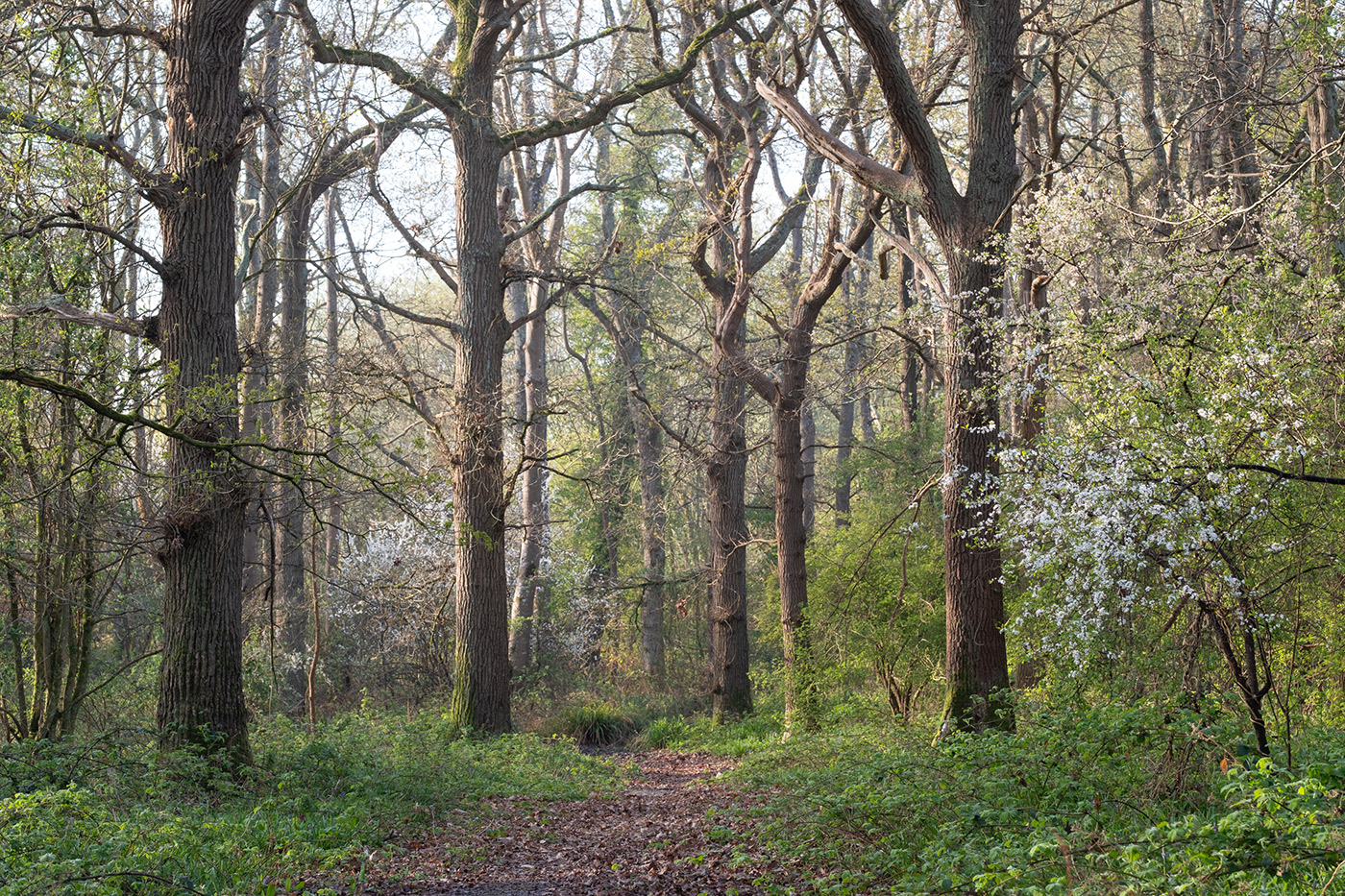
Sample 10 with XF 50-140mm f/2.8 R LM OIS WR at 54mm. Camera settings: f/8. 1/8 sec. ISO 125
Who is the X-H2 For?
The X-H2 is a great all-round photo-centric camera for photographers who gain from the high-resolution images it delivers, and need high image quality from a robust, workhorse body. It’s great for weddings, events, families and portraits, street photography and landscapes – essentially any subject where outright speed isn’t the primary concern.
While you still get a very healthy 15fps in mechanical shutter mode and fast autofocus performance, the X-H2 isn’t geared towards fast-paced sports, action or wildlife in the way which the X-H2S is. The X-H2S has a stacked sensor with faster readout speeds, and is a better option for shooting high-speed bursts and tracking fast action.
The X-H2 sits comfortably as the workhorse in the range and is perfect for enthusiasts and professionals who want the flexibility to shoot high-res stills and up to 8K video, with excellent handling and reliability.
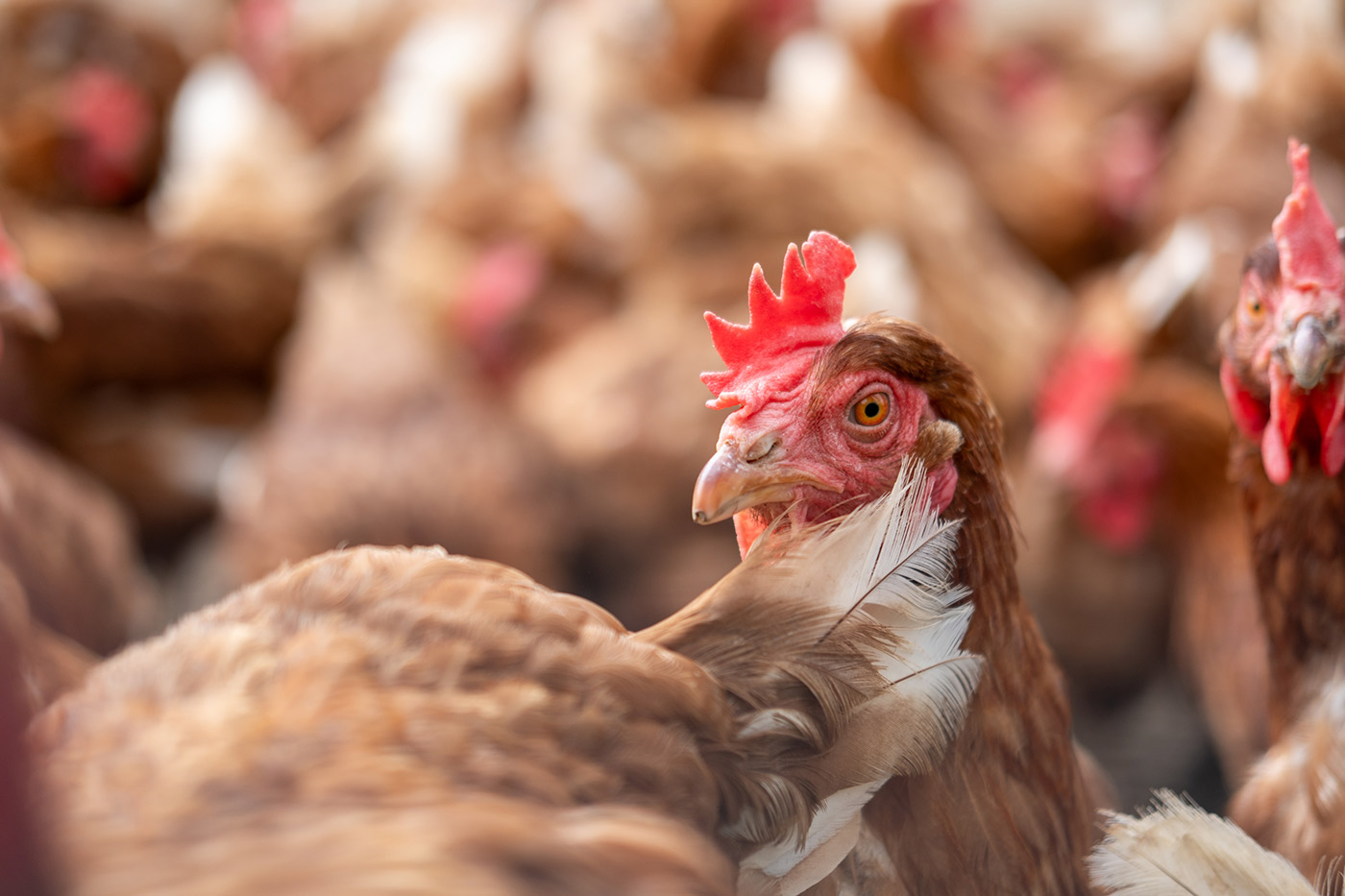
Sample 11 with XF 35mm f/2 R WR. Camera settings: f/2. 1/800 sec. ISO 125 (right click to enlarge)
If you’re considering a Fuji for more casual or creative photography, the X-T5 offers similar resolution and performance in a lighter body with a retro dials-based design. Likewise, the X100VI is a stylish fixed-lens alternative that’s incredibly popular for everyday photography and travel.
The Fujifilm X-H2 is worthy of its flagship title as a stills-first camera, offering superb image quality from a high-resolution sensor, and professional handling in a rugged body. It’s ideal for photographers who appreciate the richly detailed files it is capable of, without needing the grandeur of Fujifilm’s medium format GFX system. While it’s not the fastest X Series body for high-speed action, the autofocus system is solid, and you get 15fps with the mechanical shutter, plus a full suite of subject detection tools.
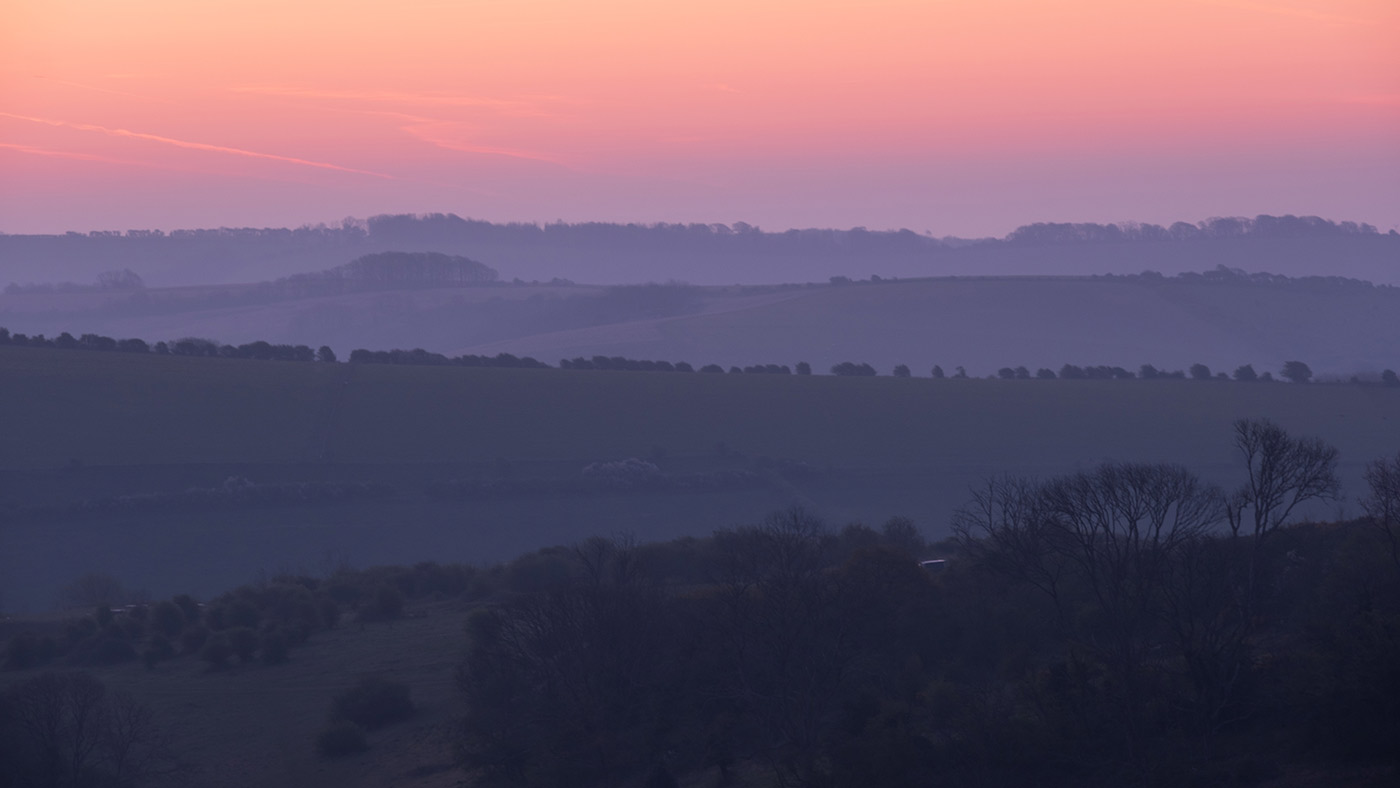
Sample 12 (cropped to panorama format) with XF 50-140mm f/2.8 R LM OIS WR at 140mm. Camera settings: f/8. 1/6 sec. ISO 125 (right click to enlarge)
Its hybrid potential is certainly up there, with 8K/30P internal Apple ProRes video recording and 10-bit internal recording, but this review focused on photography, where the X-H2 continues to impress.
You can reserve your own new Fujifilm X-H2, or save with a used Fujifilm X-H2 camera right here, and use the money you save to invest in a used Fujifilm lens, and some accessories to finish of your kit.
Share this post:
By Nick Dautlich on 25/05/2025
Nick Dautlich
Senior Content Writer and Product Reviewer
Nick Dautlich is the Senior Content Writer and Product Reviewer at Park Cameras, with over 15 years of photography experience. A Sony Imaging Professional and expert reviewer, Nick has worked with major brands such as Canon, Sony and Nikon. His work is also featured on Vanguard World UK’s website, Capture Landscapes, and Shutter Evolve. Nick’s photography includes National Trust projects and magazine covers and he is passionate about landscapes and storytelling. Nick also enjoys hiking and teaching his children about nature. Learn more on his profile page.
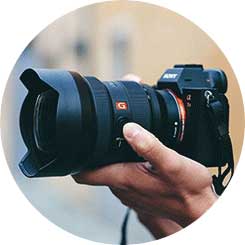
Trade in your old equipment
Fast and easy trade in service ensures your old gear is collected efficiently and you are paid quickly! It's very simple to trade in your unwanted photography gear. Just head over to our dedicated Sell or Part Exchange page, fill out the details, and we'll get back to you with an offer for your old gear. Take the cash, or put it towards the cost of your new gear. It's up to you! Find out more
sign up to the newsletter
Keep up to date on the latest photography news, events and offers. Sign up now